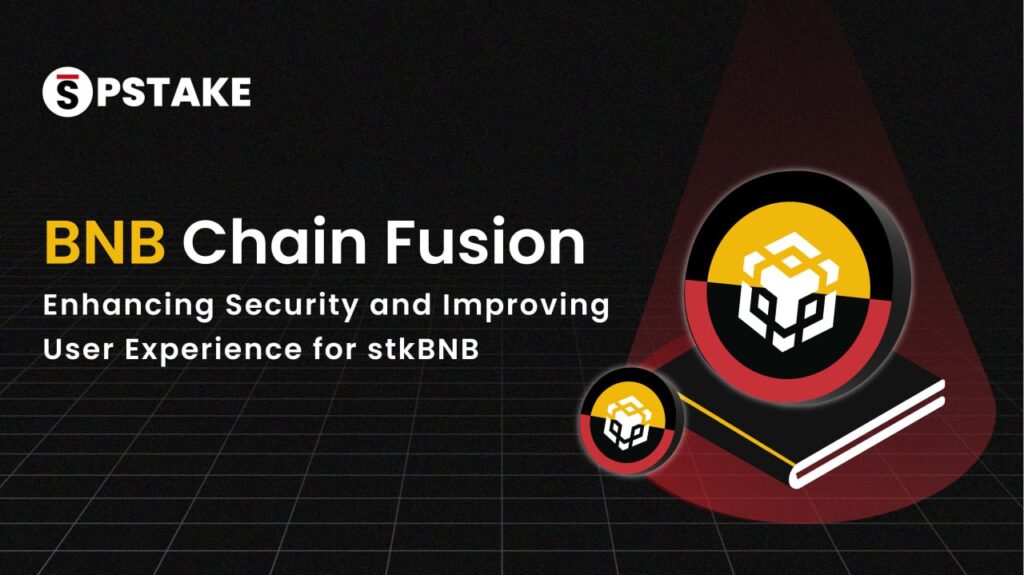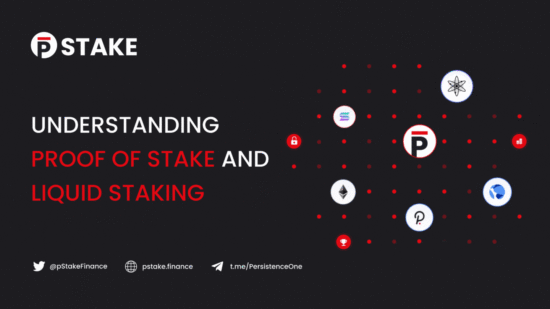Since its inception, the blockchain industry has always been evolving at a substantial pace. The debate regarding scalability, decentralisation and security has been no different. The resulting innovation has led to amazing technological feats being developed. One of the many great solutions that has risen from the industry’s evolution is the Proof of Stake (PoS) algorithm and sybil resistant mechanism.
Many may not be aware that the idea for Proof of Stake as an alternative algorithm to Proof of Work (PoW) was initially introduced as far back as 2011 in a Bitcointalk thread. Now, 10 years later, PoS based networks dominate the crypto-asset industry, though the benefits and contrast to other algorithms and consensus mechanisms may not fully be understood. Moreover, the ability to build upon what Proof of Stake offers is immense yet is only now being thoroughly explored by innovators.
To dive in, let’s begin by explaining what Proof of Stake offers to better highlight why our highly anticipated liquid staking solution is necessary for the next phase of the evolution of Proof of Stake.
Strengths & Limitations of Proof of Stake
Proof of Stake based networks require users to lock up their capital in the form of the network’s coins / native tokens in order to keep the network running and secure. By locking up capital on the network (staking), users can participate in the network’s consensus by validating transactions and governance while earning rewards as they go. One key difference between PoS and PoW is that miners of PoW networks do not have any skin in the game apart from the investment cost of hardware and electricity.
Although miners are incentivised to not act maliciously, there are no disincentives/repercussions if they do act maliciously. On the flip side, if validators on PoS networks who have locked up capital on the network act maliciously, a portion of their staked assets (locked up capital) can be burned or slashed (resulting in a loss of their capital). This punishment acts as a disincentive to prevent validators from acting maliciously.
Furthermore, those that stake their assets on the network do not get immediate access to these assets when they opt to unstake/remove their locked up capital. Protocols introduce a “cool-off” — or in other words an unbonding period — before the assets that are unstaking become liquid. This time period can range between 2 to 30 days, depending on the specific network.
1/ 📓 Proof-of-Stake for an environmentally sustainable decentralized future:
— Persistence – Unlocking Liquidity (@PersistenceOne) June 1, 2021
In a world where energy efficiency is becoming an increasingly pressing topic, PoS #blockchains like Persistence & @cosmos shine like the North Star. 🌟
🌐 Check out the facts: https://t.co/Q2C3rkfvRK pic.twitter.com/BeomiP6R2C
Additionally, PoS based networks use significantly less energy and are more capital intensive than PoW based networks. See the thread here for insights:
They also introduce some major improvements in the form of:
- High transaction throughput
- Improved user experience
- Transaction finality
- Skin in the game (incentivizing good behaviour and disincentivizing malicious/bad actors)
As of writing this article, according to stakingrewards.com, PoS protocols capture more than ~33% of the total cryptocurrency market capitalization, which is over $500B. It is interesting to note that more than $100B worth of these crypto-assets are staked to secure the PoS networks. This number itself is larger than the Total Value Locked of most DeFi ecosystems combined (TVL is the most widely used metric in DeFi that determines the total value of assets locked in different DeFi protocols).
The average return via staking rewards across some of the most prominent PoS networks is around ~10–15% APR. This comes at the cost of liquidity, because staked assets cannot be used for any other purpose such as liquidity provision, lending, borrowing, etc. Users therefore have to decide between staking their assets to secure the underlying chain/network (thereby earning stable yields) or use their assets in DeFi protocols to earn relatively higher (in some situations, unstable) yields.
Some of the major limitations of staking can be broken down into the following categories:
- Opportunity Cost & Capital Inefficiency: Staked assets cannot be used for other purposes such as borrowing or lending
- Relatively Lower Yields: Yields for staking assets are relatively lower compared to those of DeFi protocols with lending or yield farming functionality
- Inability to Access Instant Liquidity: Protocols impose unbonding/unstaking time restrictions to ensure that the security of the network is not hampered during black swan events
- Network Security: Due to the fact that staking positions are illiquid in nature, some token holders prefer not to stake them, thus reducing the overall security of the network
Fortunately, these limitations can be resolved and improved upon by liquid staking solutions, which are now increasing in popularity as innovation on this front begins to blossom.
What is Liquid Staking?
Liquid staking refers to the issuance of staked representative tokens by tokenizing the underlying network’s staked assets. The value of the representative token is determined either by the market or by the liquid staking protocol itself. Holding these staked representative tokens gives users the rights to an equivalent amount of the underlying staked assets.
While the underlying staked assets accrue staking rewards, the representative tokens can be used to generate additional yield in DeFi protocols. The native underlying tokens and staking rewards accrued from staking can be redeemed for the staked representatives at any given time, based on the market’s/protocol’s defined exchange rate. In short, liquid staking can be used to generate additional yield on top of users’ usual staking rewards.
Now that we know what liquid staking is and why we need it, let’s clarify some of the design considerations when building liquid staking solutions.
Design Considerations for Building a Liquid Staking Solution
Building a liquid staking protocol can be very tricky. There is no ‘one size fits all’ solution when it comes to building a liquid staking solution for multiple PoS chains. Different PoS networks have different staking and governance mechanisms. The liquid staking research report written by the Chorus One team explores the deep intricacies of liquid staking and the characteristics of an ideal liquid staking solution.
Proper tackling of the relevant design considerations can lead to a potentially game-changing solution. Let’s discuss some of the most important design considerations mentioned in the research report linked above, and beyond.
Fungibility
Staking positions across different validators are not the same. Assets staked with Validator A are different to the assets staked with Validator Bin the sense that Validator A and Validator B utilise different infrastructure, have different security measures in place, and also have different commission rates. This means that each validator can have a different staked representative token issued for the assets staked with them.
However this would defeat the purpose of liquid staking as it would result in fragmented liquidity. An ideal liquid staking solution is one which is designed keeping fungibility in mind. Liquid staked representatives should be fungible across all the validators that receive delegations of the underlying supported protocol tokens. This can be achieved through shared rewards and shared risks.
Liquidity
Staked representative tokens should be liquid on the secondary markets, thus allowing holders of these staked representative tokens to be able to move out of their staking positions immediately and instantly sell their position for another token.
Liquidity in the case of liquid staking is a factor of fungibility. If assets staked with different validators are represented by different staked representative tokens then this would lead to fragmentation of liquidity.
One way of ensuring liquidity of the staked representative tokens is by incentivising users to supply liquidity to a liquidity pool, with one asset being the staked representative and the other asset being a stablecoin (e.g. USDT) or the native asset. However, it is important to note that certain liquidity pairs could result in impermanent loss for the liquidity providers based on the price actions of the two tokens. In addition, a simple liquidity pool consisting of the staked token representative and the native token pair can lead to peg breakage in situations where the demand of the native token exponentially exceeds the demand of the representative token.
This means that in 50–50 pools, if the staked representative tokens and the native tokens are 1:1 pegged and people wish to move back to the native token, they would be doing so at a premium due to the exchange rate which would no longer be 1:1. Solving this problem is perhaps one of the most important considerations when designing a liquid staking protocol.
Security of the Underlying Chain
Assets staked via liquid staking solutions should not have any negative effect on the security of the underlying network. One of the key security issues arises from centralisation of stake on most PoS networks. Assets staked or delegated via liquid staking protocols should be delegated to multiple high quality validators (and not just one or two validators, which could lead to network centralisation) which can be whitelisted to receive delegations or stake from the liquid staking protocol based on certain parameters.
Governance is arguably the most important aspect of any PoS network. Liquid staking protocols could introduce governance of the underlying PoS networks for holders of staked representatives or let the whitelisted validators vote on network proposals. One approach that could be used to allow staked representative token holders to vote on proposals could require the network to support a split voting mechanism as initially proposed by the Sikka Validator on the Cosmos Hub.
Composability
Ideal liquid staking protocols should not just allow others to build on top of them but the staked representative tokens need to be compatible with other products within the industry, including DeFi protocols on different chains. The simplicity of integrating the staked representatives across DeFi protocols can go a long way in defining the use-cases and eventually leading to an increase in demand for the staked representatives.
Consider having a staked representative of Ether (ETH) which cannot be used to supply liquidity on some Decentralised exchanges such as Uniswap due to the token model being incompatible with Uniswap’s accepted token model — this leads to less liquidity and utility. This is a factor of the token model of the liquid staking protocol. Liquid staking protocols can have different types of token models — generally categorised as “single token” or “dual token” models.
There are trade-offs to both of these models, including user experience and complexities in usage of staked representatives in DeFi protocols. One such example is that many DeFi protocols require a ‘constant balance’ token mechanism (number of tokens deposited with the DeFi application does not change). Furthermore, in the case of a single token model, with the accrual of staking rewards to the same token, the balance of said token may continue changing. This makes such a token unusable in these DeFi protocols, and introduces complexities such as finding an alternative solution to this problem.
Other single token models in which the value of the staked representative token keeps changing instead of the balance (similar to the cToken model in Compound) could lead to complexities around the exchange rate implementations.
A dual token model, where one token represents a staked token and the staking rewards accrued are represented by another token, could solve the problems around the single token model but introduces complexities around liquidity of the second representative token.
Each of these token models has some trade-offs but an ideal liquid staking solution should be able to reduce the impact of these trade-offs.
Asset Issuance or Interchain Accessibility
The issuance and availability of the staked representative tokens should not just be limited to a single chain or network.
Representatives being available on liquidity-abundant networks gives users the option to use liquid tokens to generate additional yield across multiple chains that offer the best yields. The staked representative assets can either be issued by the liquid staking protocol on the native chain or directly on a different chain through the use of custom-built or third-party bridges. In an interchain accessible environment, the end users can either use the assets within the chain’s ecosystem, or use a bridge to port the native chain assets onto their desired target chain.
Issuing interoperable staked representatives can lead to greater adoption and higher liquidity for the staked representative assets.









